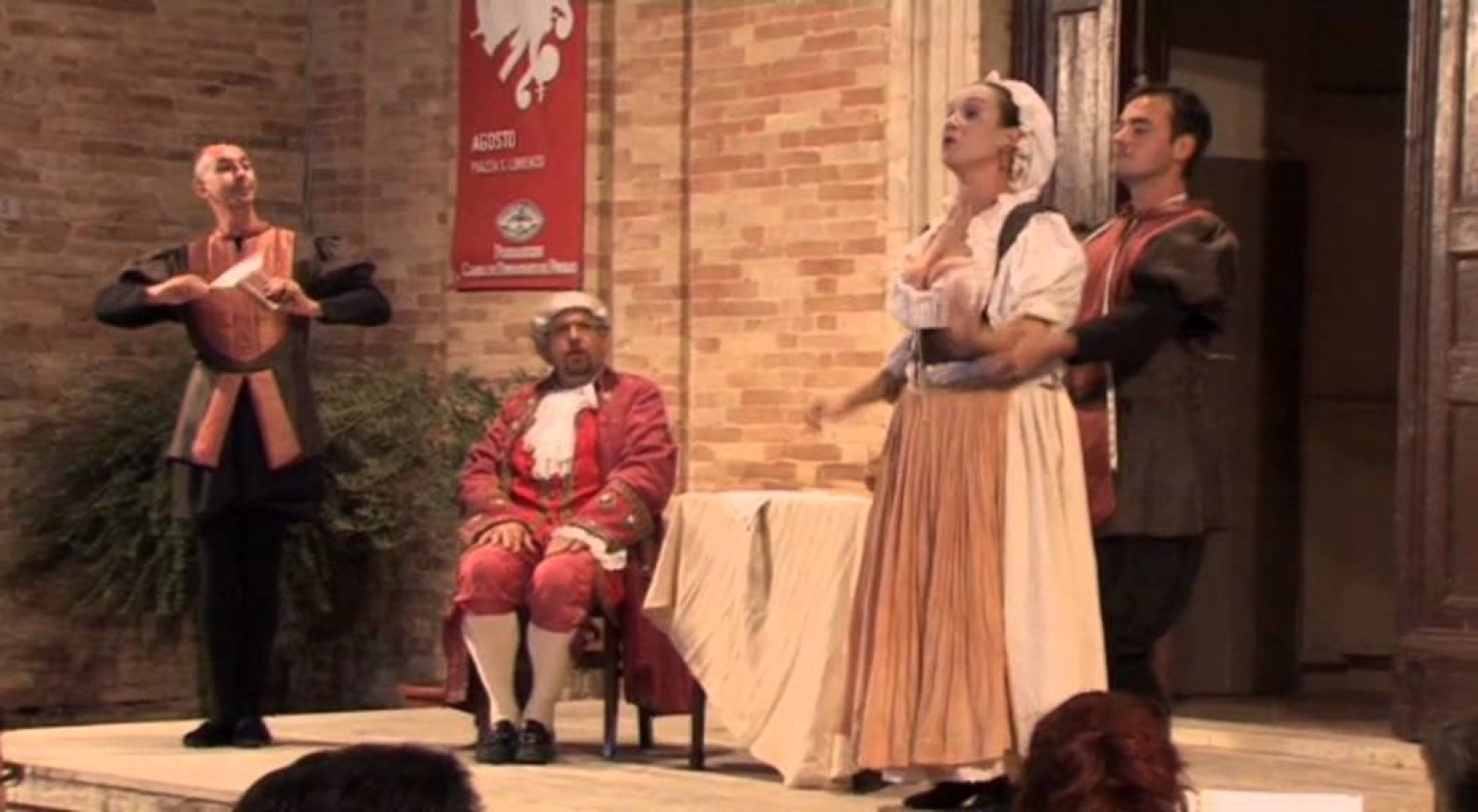Tomaso Albinoni, Pimpinone
Venice: Malibran Theater
Conductor: Giovanni Battista Rigon
Director: Davide garattini Raimondi
Sets & Lighting: Paolo Vitale
Costumes: Giada Masi
FOR STUDENTS
Pimpinone ⎮ Jaehun Jeong
Vespetta ⎮ Nabila Dandara
Conductor⎮ Giovanni Battista Rigon
Director ⎮ Davide garattini Raimondi
Sets & Lighting ⎮ Paolo Vitale
Costumes ⎮ Giada Masi
Orchestra del Conservatorio Benedetto Marcello di Venezia
Progetto Opera Giovani
La Fenice new production
in partnership with Conservatorio Benedetto Marcello di Venezia
In the early years of the eighteenth century, Apostolo Zeno and other dramatic poets began reforming the way serious operas were presented. It had been common practice to include comic scenes within a serious opera and to provide lavish entertainments known as intermedi between the acts. With the reforms, opera librettos were purged of comic scenes or characters, and extraneous spectacle was discouraged.
However, the tradition of interweaving the acts of a smaller work of a contrasting genre between the acts of a larger, more serious work persisted, and the result was the emergence of the comic intermezzo. Albinoni’s setting of Pimpinone is one of the earliest of the Venetian intermezzi to survive from this time period. It consists of three intermezzi with a linking plot. The first two were performed after the first and second acts, while the third was placed somewhere within the final act of the serious opera, as a respite during a scene change.
The librettist of Pimpinone was Pietro Pariati. His text sparkles with wit, humor, repartee, and comic wrangling. The story contrasts two stock characters of Italian comedy, the guileful young female servant girl and the gullible old member of the Italian nobility. The themes are of social conflict between the classes, and the comedy satirizes everyday Venetian life.
Albinoni’s setting is marked by brief arias and duets, delightful, simple melodies, playful counterpoint, and a parlando style that looks forward to the buffo writing that emerged later in the century. The original performance of Pimpinone was given at the premiere of Astarto, a serious opera by Albinoni, at the Teatro S. Cassiano of Venice, in 1708.
Pimpinone quickly became a standard work in the operatic repertoire and was performed internationally, as far away as Moscow and Ljubljana. Performance traditions grew up around pairs of players, such as Rosa Ungarelli and Antonio Ristorini, who specialized in comic roles and took the intermezzi from city to city and from theater to theater as they traveled.
(Rita Laurance)

